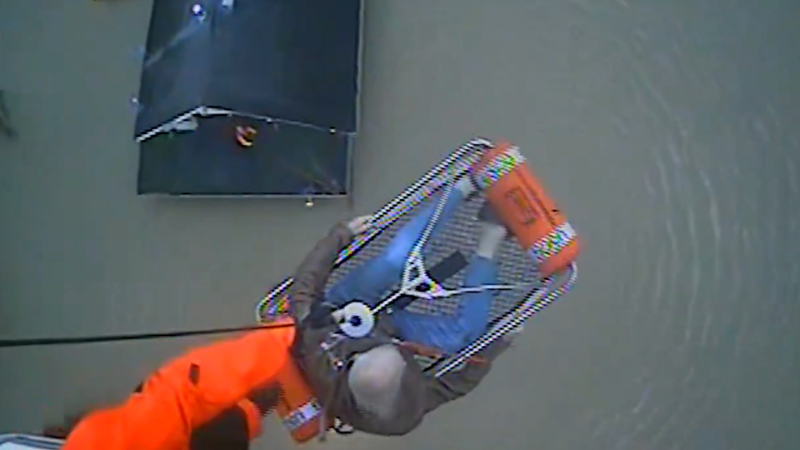School delays and closures: How superintendents decide to cancel classes due to weather
Winter weather may bring road and driving conditions that can delay or cancel school operations, but who makes the decisions and how do they make the final call?
A winter storm covered the Northeast and Midwest regions of the United States with snow and ice on Feb. 5-6. Sightings of lightning and thunder snow have also been reported.
Winter weather may bring freezing temperatures and driving conditions that can delay or cancel school operations, but who makes the decisions and how do they make the final call? Cancellations or delays are critical decisions that administrators must make to ensure student safety while considering educational needs and community impact.
The process typically begins with monitoring weather forecasts and road conditions. Superintendents and school officials often collaborate with local meteorologists, transportation departments, and public safety officials to gather accurate and up-to-date information.
The superintendent is the top executive in a school district, and they oversee the daily operations and the long-range planning of a school district.
Serving as the point person for all district matters, the role of a superintendent is to supervise school principals and district staff, to work with school board members and to manage fiscal operations.
School superintendents make day-to-day decisions about educational programs, spending, staff and facilities. The superintendent hires, supervises and manages the central staff and principals; they also decide when to delay or cancel school due to inclement weather.

A worker clears snow off school buses, after schools were closed due to a storm, in Manchester, N.H., Monday, Feb. 13, 2017. Another winter blast of snow and strong winds moved into the Northeast on Sunday, just days after the biggest storm of the season. (AP Photo/Charles Krupa)
"My process has been roughly the same for 18 years serving in both rural and suburban districts. The times just vary a bit, and now we get frequent situation reports from the National Weather Service," former Superintendent in St. Louis, Missouri, Dr. Chris Gaines said, adding that he would actually get in his car by 3 a.m. and drive around the district to gauge the roads
"My director of transportation is also driving and talking to his colleagues in other districts. My director of facilities is out sometimes as well. Usually, we talk prior and have a plan of who will do what," Gaines said.
Superintendents must work with school leaders, such as principals and other districts, to serve the needs of students and their district.
A semitruck jackknifed across several lanes of a highway as a major winter storm caused slick roadways around Kansas City, Missouri, on Jan. 4.
"Around 4 a.m., the texts begin with my neighboring districts. Usually, our roads are in similar conditions, although our neighbor to the south has more rural, hilly roads. At 4:30 a.m., we have a conference call with the all the districts in our county," Gaines said.
There can be more than 50 school districts in one county alone.
"I watch the National Weather Service forecasts and reports more than anything else. The person who coordinates our conference call sometimes speaks with them and the road department," Gaines said.
Gaines and other superintendents use as many resources as possible to make the best educated decision.
"Each area reports and then we might go through the list of districts to get a better idea of what everyone is thinking. We try to have any closing or late start decisions made by 5 a.m. and announced," Gaines said.
Gaines said they have to make a decision by 5 a.m. to notify bus drivers, custodians and cooks not to come to work.
"We have not done a late start but almost did one recently. In retrospect, I should have because road conditions were significantly improved by 8 a.m. This particular storm delivered more than everyone thought after some very low temperatures and the road departments were not prepared," Gaines said.
"No two weather events are the same. In large geographic districts, some areas are impacted more than others," he added. "Years ago in another district, I had a storm that delivered 8 inches of snow to the southern part of our district during the day. Only one bus route was impacted, and we sent them home at lunch," Gaines said.
Since buses begin picking up students as early as 6:30 a.m., most districts do not reverse an early-morning decision for schools to remain open, even if weather conditions worsen throughout the early morning.
They assume parents will have already left for work, believing that their child was picked up for school. Therefore, they bring students to school and determine the next steps once the students have arrived at school and everyone is safe.
Storm chaser Aaron Jayjack is in Houston, Texas, where a rare winter storm has blanketed the city with snow and ice. The city streets have turned into a ghost town due to the rare storm on Jan. 21.
At private schools, the principal makes the decision. Charter schools, which are schools of choice, make such decisions independently and may or may not follow the closures of schools around them. Charter schools do not have district boundaries, therefore students may live anywhere and attend them. This makes the process of canceling school due to inclement weather a little more challenging. In most cases, they follow what the county announces.
The overarching goal is to prioritize the safety of students and staff while minimizing disruptions to the educational process. Although these decisions can be challenging and sometimes controversial, they are made with the best available data and the well-being of the school community in mind.
Report a Typo











